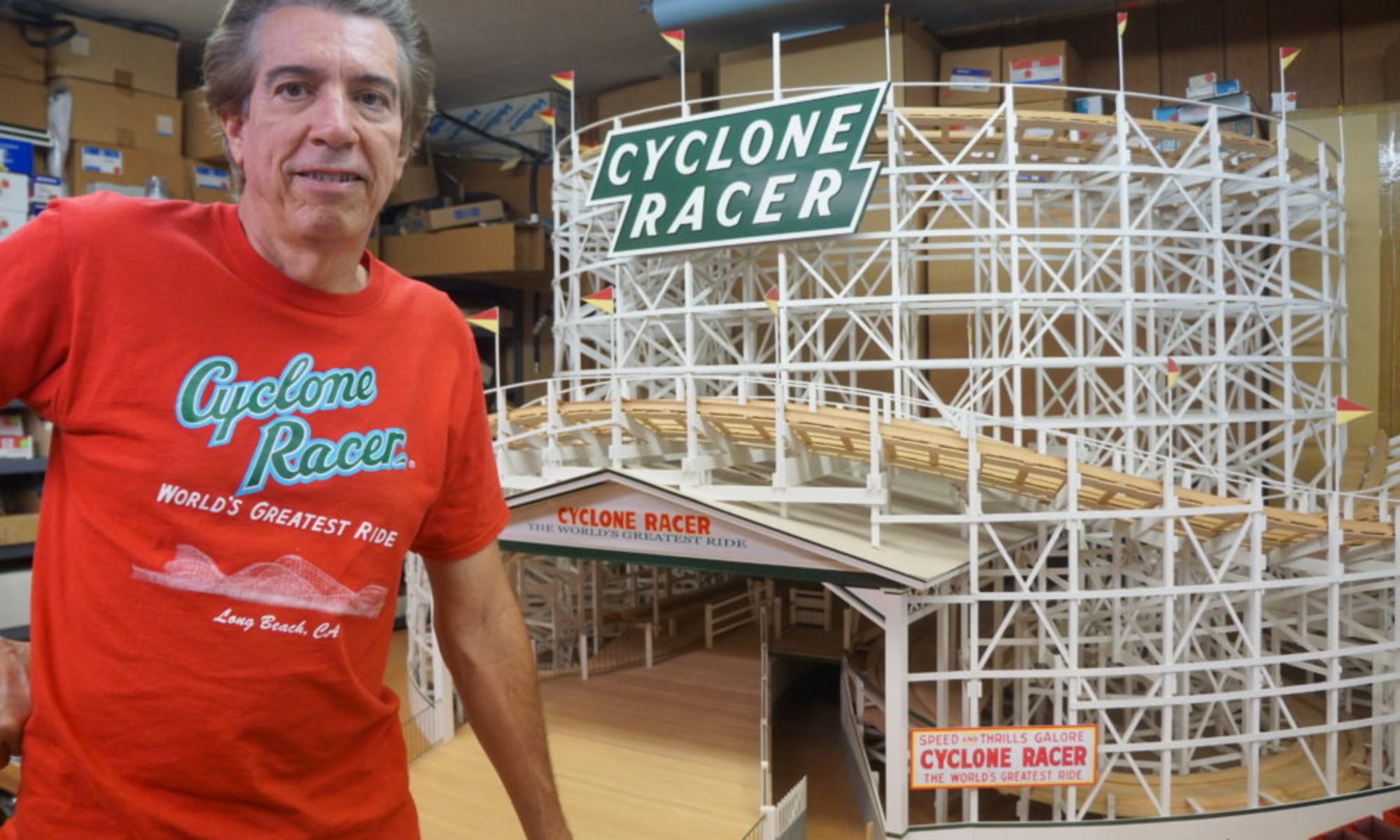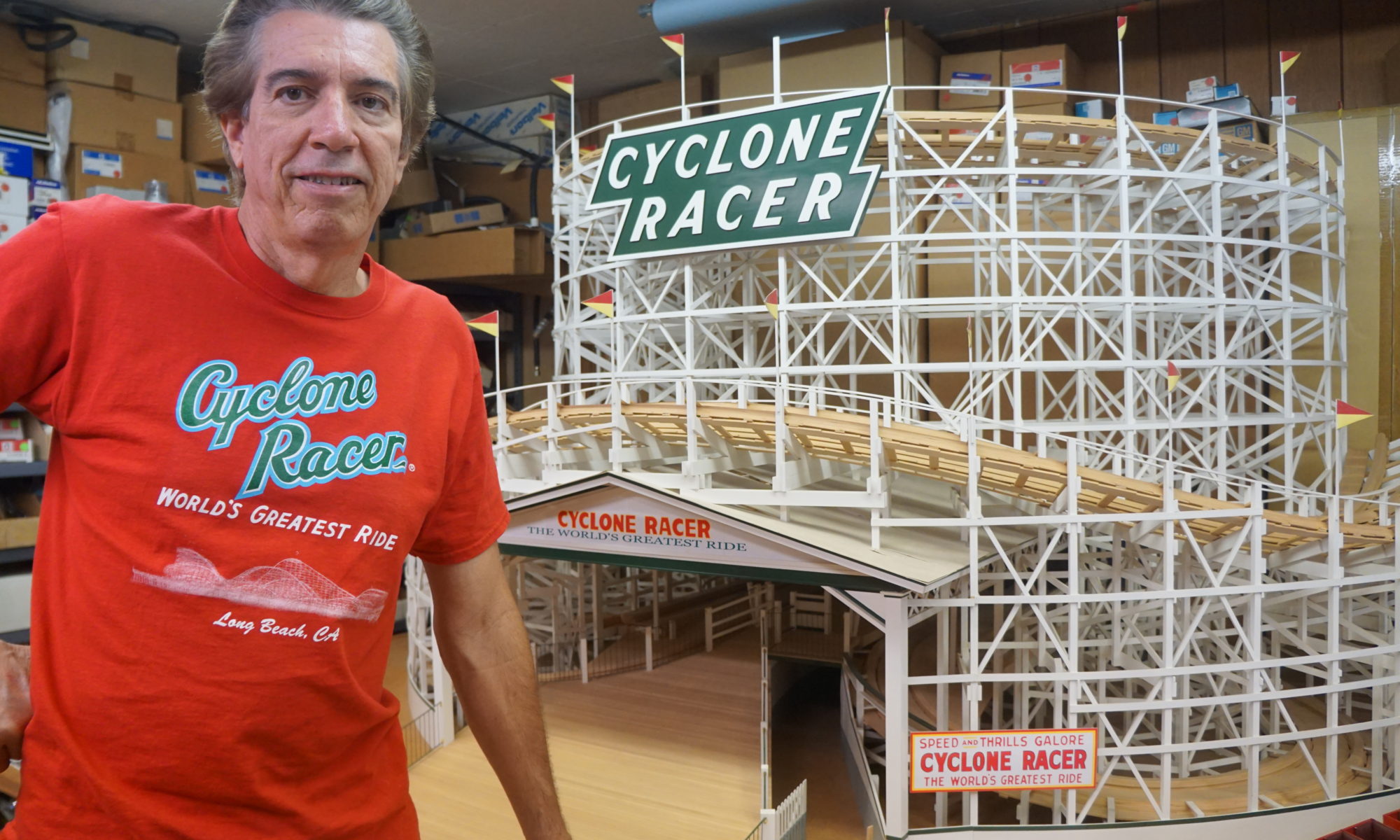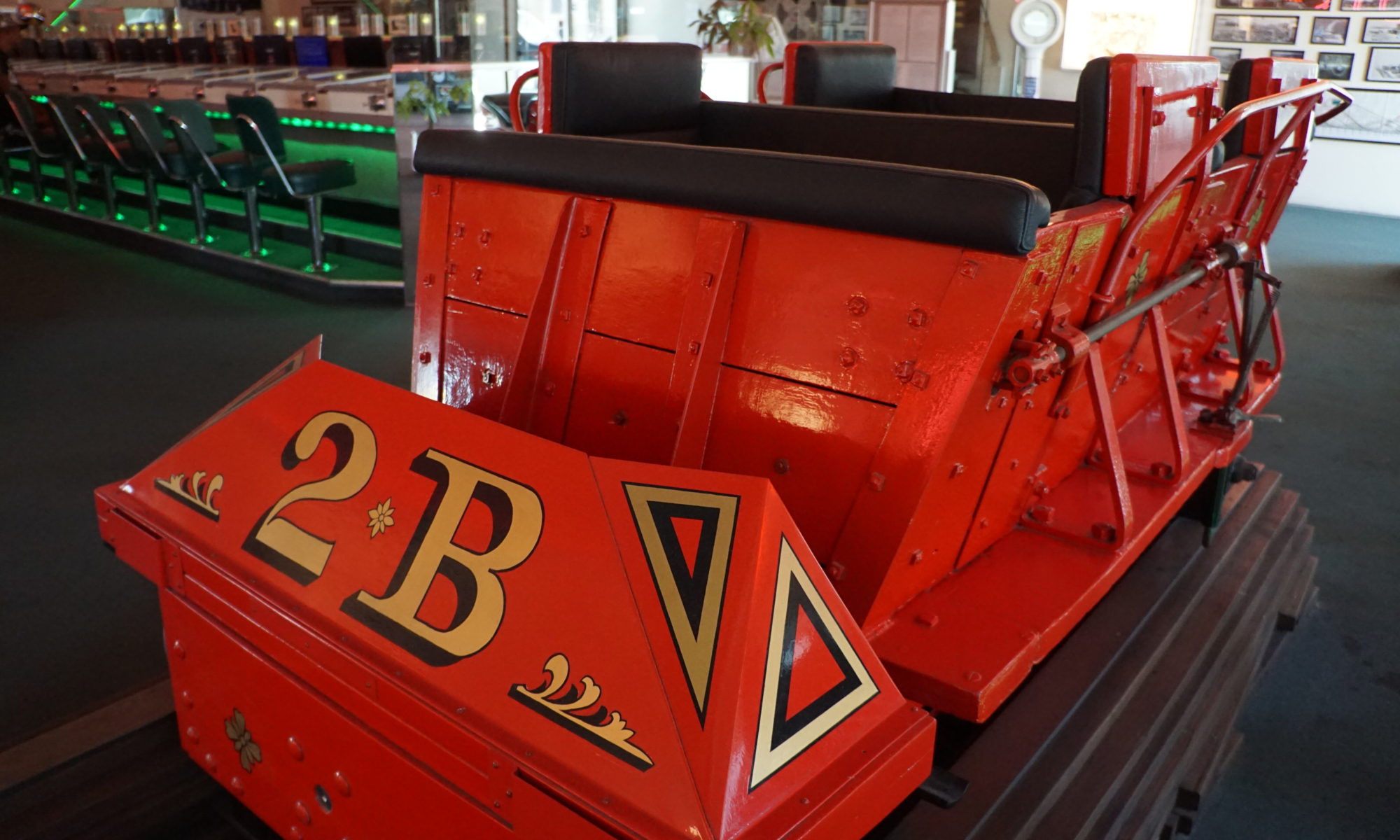Larry Osterhoudt with his partial model of the Cyclone Racer.
I visited with Cyclone Racer enthusiast, Larry Osterhoudt on Thursday, October 17, 2019 at 3:00 PM.
Larry’s on a mission to re-create The World’s Greatest Ride, the old Pike’s Cyclone Racer roller coaster, on a new pier in downtown Long Beach. He’s spent years studying old photos and videos and collecting facts and tidbits, not just of The Cyclone Racer, but also of roller coasters of old around the USA.
It may seem like a Wild Idea, but we all know that some of the best ideas start as Wild Ideas. Whether Larry’s vision of a new Pike with a new Cyclone Racer will be realized, time will tell. Today I will share with you some interesting tidbits that came up in conversation with Larry that day. It’s not everything I learned that day, some I will save for another day.
Larry walked me through the 17 hills of the Cyclone Racer. I’d heard the number before but, not having thought too much about the way a rollercoaster works, the meaning of the 17 hills didn’t impress me. That day I realized this: The only conveyance of energy to the roller coaster car was then, and still is the chain that catches the car and takes it up to the top of the first hill.
After that, it’s all gravity and momentum.
The roller coaster needs to be able to complete the run each time, consistently, regardless of the weight of people in it.
This is what fascinates Larry Osterhoudt. Here is a video of the 17 hills of the Cyclone Racer design, as analyzed and captured in his engineering drawings.


